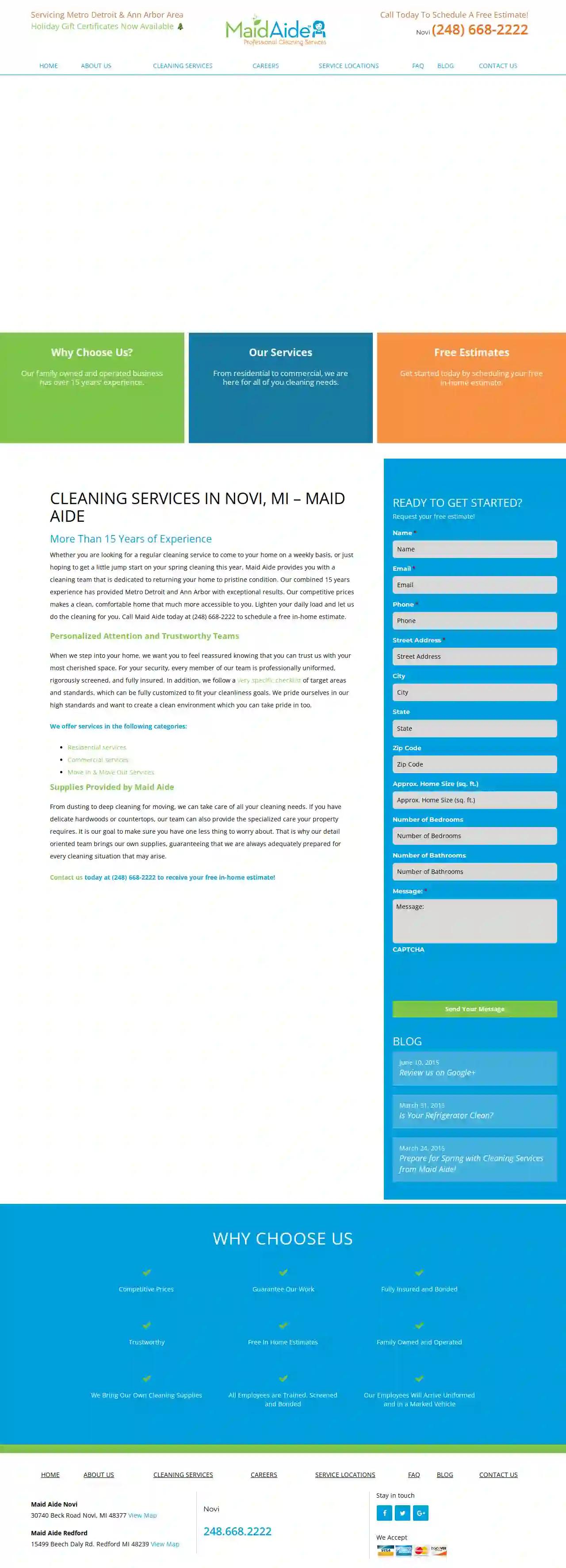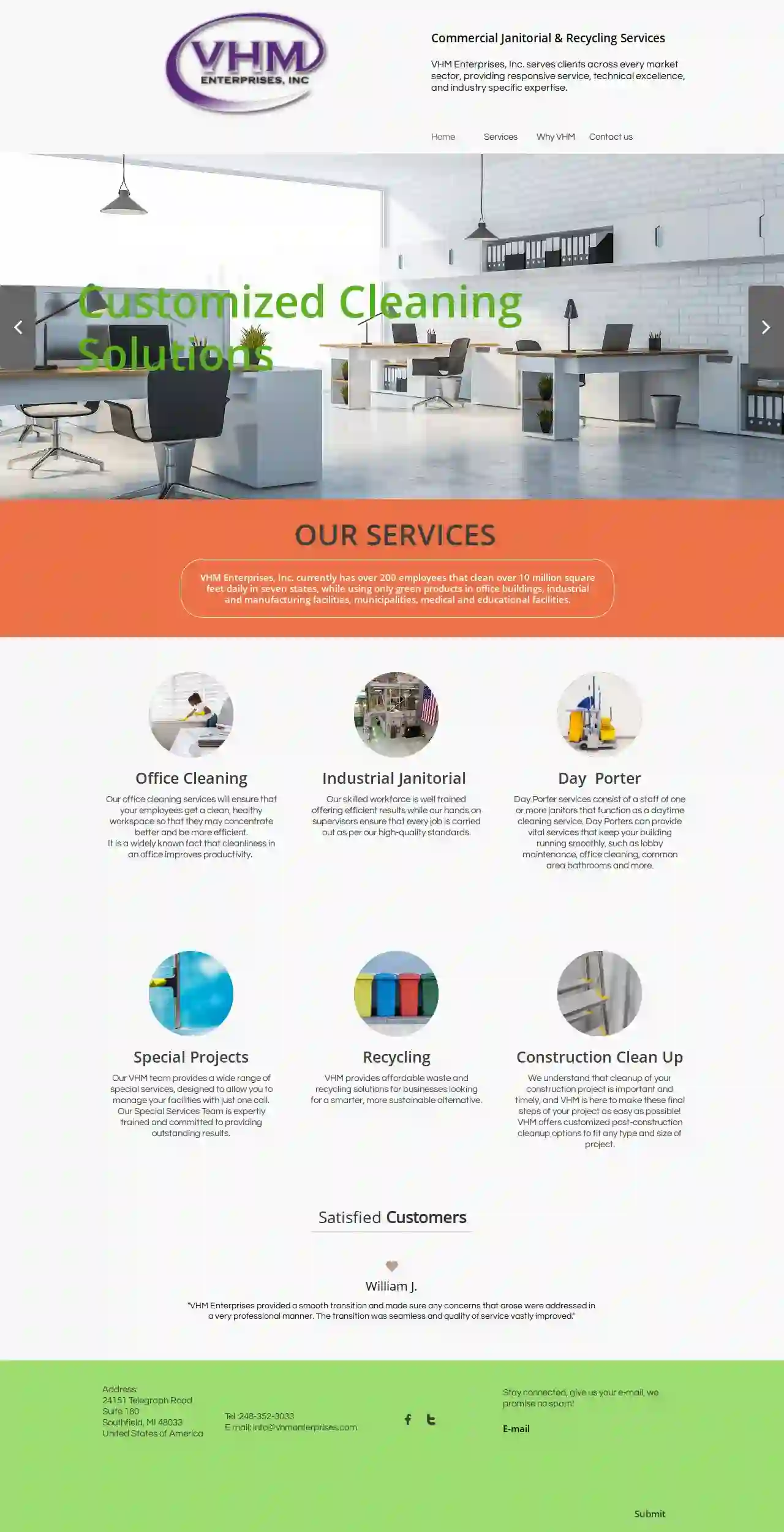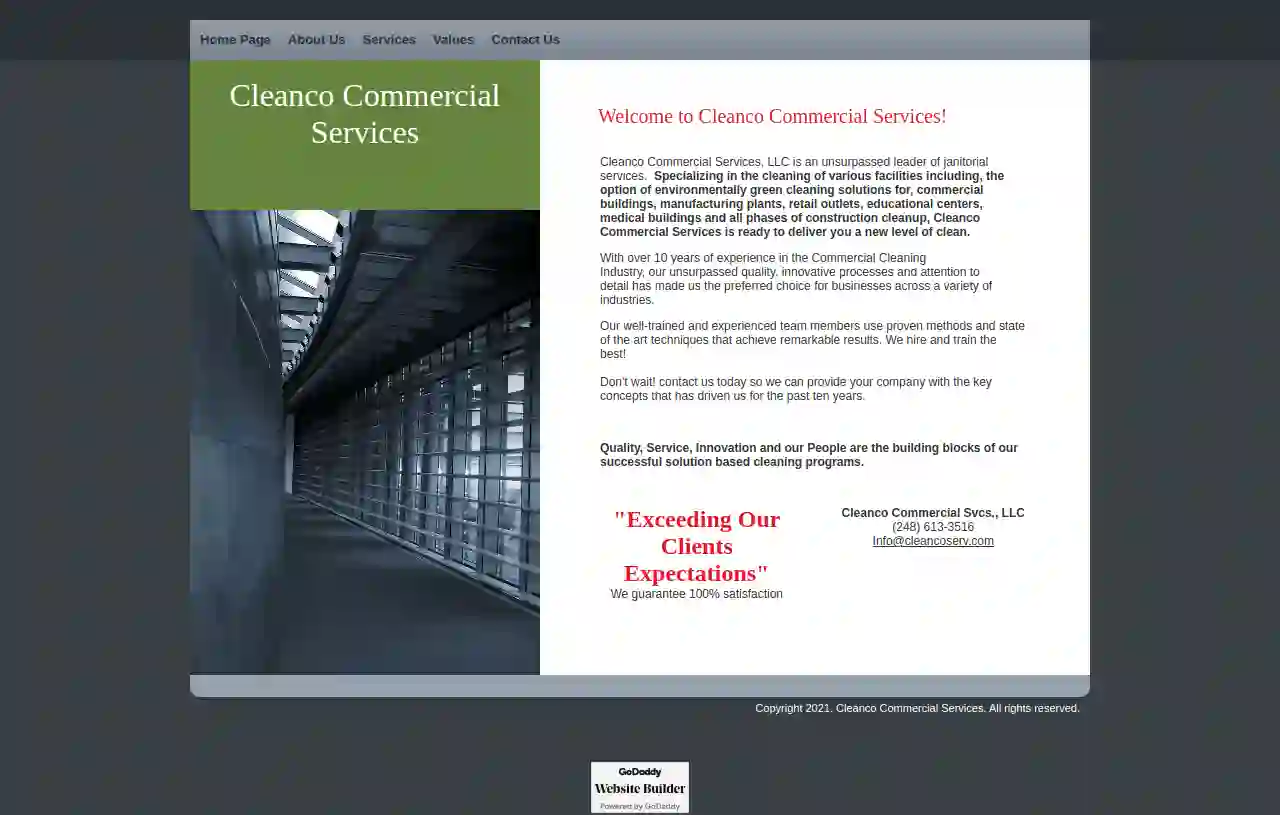Cleaning Services Plymouth
Find top Professional Cleaners in Plymouth
Receive up to 3 House Cleaning quotes for your project today! Compare profiles, reviews, accreditations, portfolio, etc... and choose the best offer.

Prestigious Cleaning Services
123 Main St, Kalamazoo, MI, 49001, USPrestigious Cleaning Services LLC is a local and family-owned business that specializes in providing professional cleaning solutions for both residential and commercial properties. With over 10 years of experience in hygiene and sanitation practices, they offer a broad spectrum of services including business offices, post-construction, residential, medical offices, education, Airbnb/apartments, and industrial. They are passionate about ensuring the health and safety of their community and utilize effective cleaning methods and eco-friendly products. Their team is committed to providing exceptional cleaning solutions tailored to meet the specific needs of each client, ensuring a safe and healthy environment for clients, their families, and employees. They guarantee customer satisfaction and are transparent with their service and pricing.
- Services
- Why Us?
- Accreditations
- Our Team
- Testimonials
- Gallery
Get Quote
Clean Team Battle Creek
543 reviewsDetroit, US- Services
- Why Us?
- Gallery
Get Quote
CleanNet of Greater Michigan, Inc.
3.317 reviewsDetroit, US- Services
- Why Us?
- Gallery
Get Quote
Broom's & Bloom's services L.L.C.
4.818 reviewsMuskegon, US- Services
- Why Us?
- Gallery
Get Quote
Maid Aide
4.583 reviewsDetroit, US- Services
- Why Us?
- Gallery
Get Quote
Maids In A Minute Of Ann Arbor
4.58 reviewsAnn Arbor, US- Services
- Why Us?
- Gallery
Get Quote
SERVPRO of Muskegon
4.896 reviews4075 Airline Rd, Muskegon, 49444, USSERVPRO of Muskegon is a trusted leader in the restoration industry, providing advanced cleaning and restoration services to residential and commercial properties. Our highly-trained team of certified professionals is ready to respond 24/7 to any size disaster. We specialize in water damage, fire damage, mold remediation, storm/disaster construction, and commercial services. Our goal is to make it "Like it never even happened."
- Services
- Why Us?
- Testimonials
- Gallery
Get Quote
VHM Enterprises Inc
3.326 reviewsDetroit, US- Services
- Why Us?
Get Quote
Cleanco Commercial Services
51 reviewsWaterford, MI, 802 Apopka, 48327, USCleanco Commercial Services, LLC is an unsurpassed leader of janitorial services, specializing in the cleaning of various facilities including the option of environmentally green cleaning solutions for commercial buildings, manufacturing plants, retail outlets, educational centers, medical buildings, and all phases of construction cleanup. With over 10 years of experience in the Commercial Cleaning Industry, our unsurpassed quality, innovative processes, and attention to detail has made us the preferred choice for businesses across a variety of industries. Our well-trained and experienced team members use proven methods and state-of-the-art techniques that achieve remarkable results. We hire and train the best! Don't wait! Contact us today so we can provide your company with the key concepts that has driven us for the past ten years. Quality, Service, Innovation, and our People are the building blocks of our successful solution-based cleaning programs. 'Exceeding Our Clients Expectations' We guarantee 100% satisfaction.
- Services
- Why Us?
- Accreditations
- Our Team
- Testimonials
- Gallery
Get Quote
Molly Maid of Kalamazoo / Portage
4.7165 reviewsKalamazoo, US- Services
- Why Us?
- Gallery
Get Quote
Over 60,241+ Cleaning Services onboarded
Our janitorial companies operate in Plymouth & surrounding areas!
CleaningMatch has curated and vetted the Best Janitorial Businesses arround Plymouth. Find the most reliable contractor today.
Frequently Asked Questions About Cleaning Services
- Blot, don't rub: When treating fresh stains, blot with a clean cloth or paper towel to absorb as much of the stain as possible. Rubbing can spread the stain and damage carpet fibers.
- Club Soda: For spills like wine or coffee, pour club soda on the stain, let it fizz, then blot with a clean cloth. Repeat if needed.
- Vinegar Solution: Mix equal parts white vinegar and water, apply to the stain, and blot. Vinegar helps remove stains and odors.
- Baking Soda Paste: Make a paste with baking soda and water, apply to the stain, let it dry, then vacuum. Baking soda absorbs odors and lifts stains.
- Commercial Carpet Cleaner: : Use a commercial carpet cleaner according to the instructions. Choose a cleaner specifically designed for the type of stain you're dealing with.
- Professional Carpet Cleaning: For stubborn or deeply set stains, consider hiring a professional carpet cleaning service. They have specialized equipment and expertise in stain removal.
- Cleaning: Removing dirt, dust, and debris from surfaces using soap or detergent and water. It improves the appearance and removes visible contaminants.
- Sanitizing: Reducing the number of bacteria on surfaces to a safe level. It uses chemical disinfectants or heat to kill or inactivate bacteria.
- Disinfecting: Killing or inactivating most disease-causing microorganisms on surfaces. It uses stronger chemical disinfectants than sanitizing and targets a wider range of pathogens.
- Regular dusting: Dust frequently using microfiber cloths or a duster. Pay attention to surfaces that attract dust, such as shelves, electronics, and furniture.
- Vacuuming: Vacuum carpets and rugs regularly using a vacuum cleaner with a HEPA filter to trap dust mites and allergens.
- Air Purifier: Consider using an air purifier to remove dust particles and allergens from the air.
- Reduce Clutter: Clutter provides more surfaces for dust to settle. Declutter regularly to minimize dust traps.
- Window Treatments: Wash or vacuum window treatments, such as curtains or blinds, regularly to remove dust buildup.
- Bedding: Wash bedding, including sheets, pillowcases, and blankets, weekly in hot water to remove dust mites.
- Doormats: Place doormats at entrances to trap dirt and dust from shoes before they enter your home.
- White Vinegar: A versatile cleaner that cuts through grease, removes stains, and deodorizes. Mix equal parts water and vinegar for a general-purpose cleaner.
- Baking Soda: A natural abrasive and deodorizer. Sprinkle baking soda on surfaces, let it sit, then scrub and rinse.
- Lemon Juice: Acts as a natural bleaching agent and disinfectant. Mix lemon juice with water for a cleaning solution or use it directly on stains.
- Castile Soap: A gentle and biodegradable soap made from plant oils. Mix a few drops of castile soap with water for a versatile cleaning solution.
- Essential Oils: Add a few drops of essential oils like tea tree oil or lavender oil to cleaning solutions for a natural fragrance and antibacterial properties.
How can I get rid of tough stains on carpets?
Always test any cleaning solution on a small, inconspicuous area of the carpet first to ensure it doesn't cause discoloration or damage.
What is the difference between cleaning, sanitizing, and disinfecting?
Cleaning is usually the first step, followed by sanitizing or disinfecting depending on the level of hygiene required.
How do I prevent dust from accumulating in my home?
By implementing these preventive measures, you can significantly reduce dust accumulation and maintain a cleaner and healthier home.
What are some eco-friendly cleaning solutions?
Remember to test these solutions on a small, inconspicuous area first to ensure they don't damage delicate surfaces.
How can I get rid of tough stains on carpets?
- Blot, don't rub: When treating fresh stains, blot with a clean cloth or paper towel to absorb as much of the stain as possible. Rubbing can spread the stain and damage carpet fibers.
- Club Soda: For spills like wine or coffee, pour club soda on the stain, let it fizz, then blot with a clean cloth. Repeat if needed.
- Vinegar Solution: Mix equal parts white vinegar and water, apply to the stain, and blot. Vinegar helps remove stains and odors.
- Baking Soda Paste: Make a paste with baking soda and water, apply to the stain, let it dry, then vacuum. Baking soda absorbs odors and lifts stains.
- Commercial Carpet Cleaner: : Use a commercial carpet cleaner according to the instructions. Choose a cleaner specifically designed for the type of stain you're dealing with.
- Professional Carpet Cleaning: For stubborn or deeply set stains, consider hiring a professional carpet cleaning service. They have specialized equipment and expertise in stain removal.
Always test any cleaning solution on a small, inconspicuous area of the carpet first to ensure it doesn't cause discoloration or damage.
What is the difference between cleaning, sanitizing, and disinfecting?
- Cleaning: Removing dirt, dust, and debris from surfaces using soap or detergent and water. It improves the appearance and removes visible contaminants.
- Sanitizing: Reducing the number of bacteria on surfaces to a safe level. It uses chemical disinfectants or heat to kill or inactivate bacteria.
- Disinfecting: Killing or inactivating most disease-causing microorganisms on surfaces. It uses stronger chemical disinfectants than sanitizing and targets a wider range of pathogens.
Cleaning is usually the first step, followed by sanitizing or disinfecting depending on the level of hygiene required.
How do I prevent dust from accumulating in my home?
- Regular dusting: Dust frequently using microfiber cloths or a duster. Pay attention to surfaces that attract dust, such as shelves, electronics, and furniture.
- Vacuuming: Vacuum carpets and rugs regularly using a vacuum cleaner with a HEPA filter to trap dust mites and allergens.
- Air Purifier: Consider using an air purifier to remove dust particles and allergens from the air.
- Reduce Clutter: Clutter provides more surfaces for dust to settle. Declutter regularly to minimize dust traps.
- Window Treatments: Wash or vacuum window treatments, such as curtains or blinds, regularly to remove dust buildup.
- Bedding: Wash bedding, including sheets, pillowcases, and blankets, weekly in hot water to remove dust mites.
- Doormats: Place doormats at entrances to trap dirt and dust from shoes before they enter your home.
By implementing these preventive measures, you can significantly reduce dust accumulation and maintain a cleaner and healthier home.
What are some eco-friendly cleaning solutions?
- White Vinegar: A versatile cleaner that cuts through grease, removes stains, and deodorizes. Mix equal parts water and vinegar for a general-purpose cleaner.
- Baking Soda: A natural abrasive and deodorizer. Sprinkle baking soda on surfaces, let it sit, then scrub and rinse.
- Lemon Juice: Acts as a natural bleaching agent and disinfectant. Mix lemon juice with water for a cleaning solution or use it directly on stains.
- Castile Soap: A gentle and biodegradable soap made from plant oils. Mix a few drops of castile soap with water for a versatile cleaning solution.
- Essential Oils: Add a few drops of essential oils like tea tree oil or lavender oil to cleaning solutions for a natural fragrance and antibacterial properties.
Remember to test these solutions on a small, inconspicuous area first to ensure they don't damage delicate surfaces.